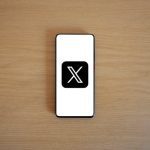With millions of website strategies available, you may wonder what an appropriate website should look like. But, before that, do the looks even matter? Well, sure, pretty, you have clicked on some websites and gone “WOW” at first glance; plus, you didn’t have any problem getting what you were looking for, and it felt like what you needed. But, on the other hand, you may have experienced some websites that you couldn’t spend 10 seconds surfing. Why? Because it was not a good website.
Well, the looks/appearance of a quality website can enhance or ruin the initial purpose of the website, as it is among the key factors determining a business’s success. Therefore, every website should contain the below features to be perceived as a good website.
Primary Purpose
The first and most important question is, “What is the primary purpose of this website?” No one wakes up on Wednesday morning and says, “Oh! Today I want to create a website for absolutely nothing….” Every website has a specific reason why it is created, right? So, within a few seconds of clicking a website, every visitor should be able to know the primary purpose of the website and what it has to offer.
For example, every visitor should quickly notice the shopping cart feature if a website is created to sell products online.
Simplicity and Design
How simple but catchy the design of a website greatly influences user experience. The colours, typography and visuals all matter.
First, you need to have a colour palette for your brand. This will make it easy for you to decide on the colour combinations to use on your website, not just jump on random colours. Moreover, a good website shouldn’t exceed five colours.
Secondly, typography is a vital aspect of every website. It kind of controls the individuals’ attention and speaks for the brand. Therefore, a good website should have no more than three font types.
The visuals of a website are all the imagery aspects that form the website. The visuals should explain/display the nature of the company/brand. This is important because it decides every visitor’s first impression.
Easy to Navigate
A good website should be easy to navigate. Nobody wants a complicated website. The easier a website can navigate, the faster it retains its visitors. If visitors find it hard to navigate a website, look at competitors’ websites. Consistent layouts and visual cues for functionality should be standard across a good website.
Mobile Friendly
We live in a world where people access the internet via mobile phones. You have no idea what device your next visit will use to access your website. So, you wouldn’t like your website to look scattered or unfriendly. There will hardly be an SEO ranking for a website without being mobile-friendly.
Type Of Content
The type of content on a website also contributes to its overall quality. A website can be A+ on the design, but poor content can ruin its whole purpose. Educative, exciting and entertaining content is the best. In addition, consistent quality content updates, whether video, audio or text, will make visitors come back for more updates and can easily convert these visitors to customers and enhance the SEO ranking of a website.
Call To Action
A key factor for almost every website. Not just e-commerce websites, but every website should ask visitors to do at least one thing. This may include sharing an article, following SM handles, signing up or downloading what they have to offer.
Load Time
Everyone seems to be in a hurry these days. No one can wait more than 5 seconds for a website to fully load. In today’s world, a good website should be able to access any of its pages within 3 seconds. With quality content and fast load time, no way that won’t leave a smile on any visitor’s face. Of course, the speed of a website starts with quality hosting. However, content optimisation has a strong effect on load time.
Have our team of website designers create/design and maintain a website that ranks number one on search engine result pages and drives massive traffic.



